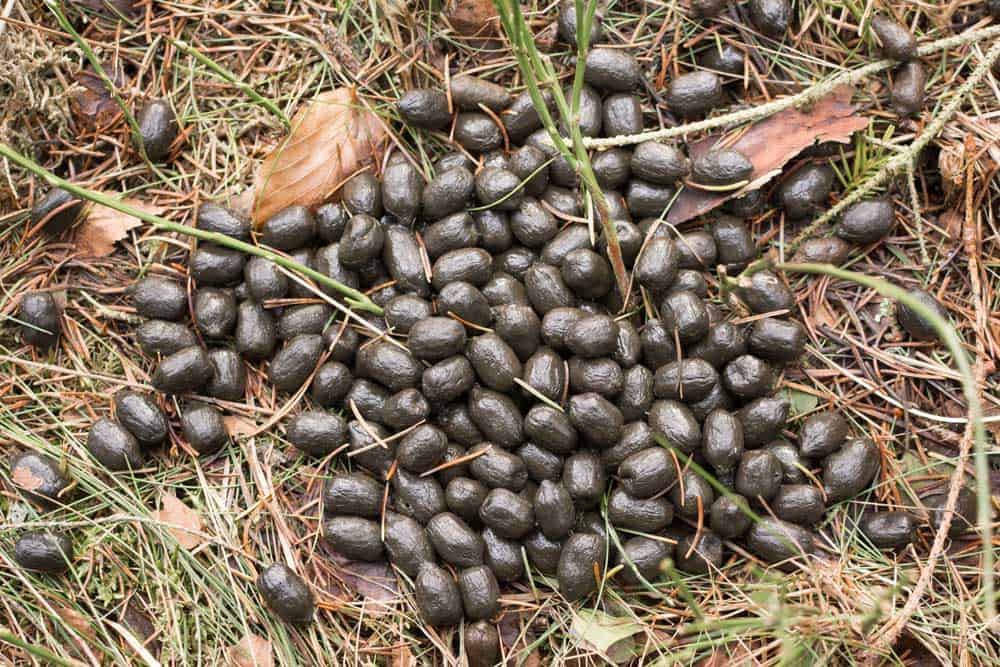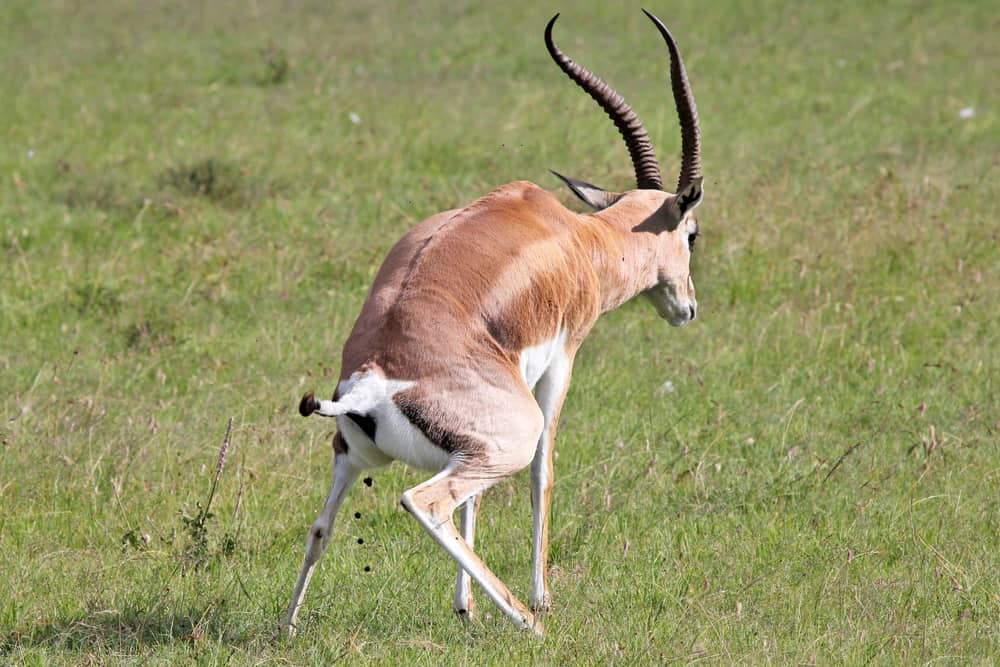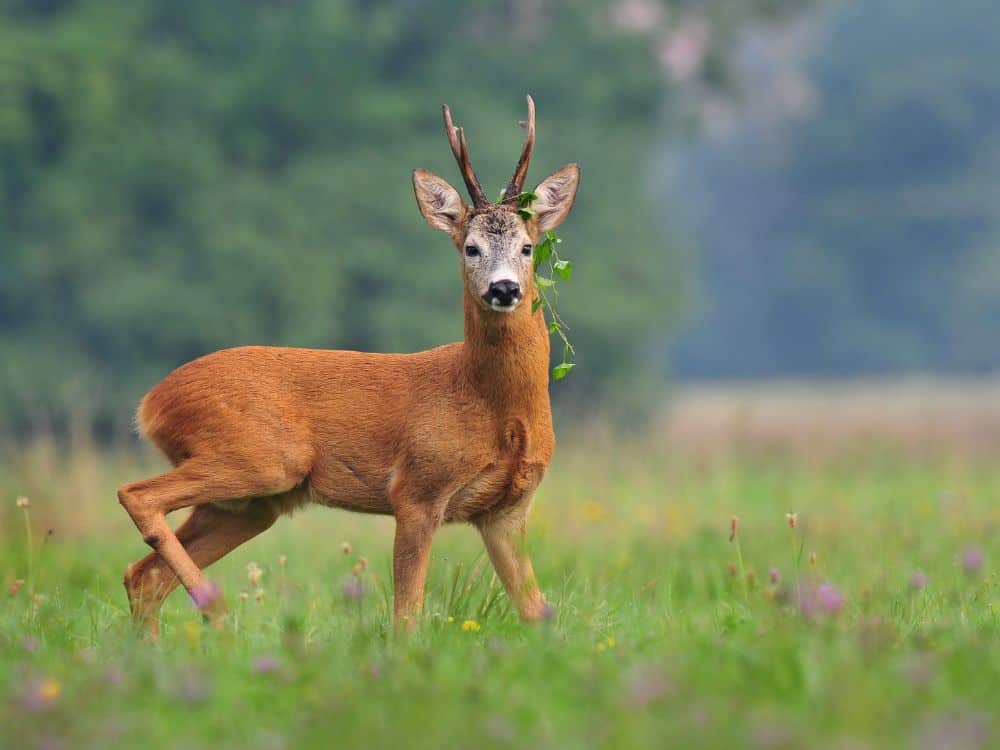There are several reasons you may need to identify deer poop, and you can actually learn a lot from what you see. Maybe you’re a hunter trying to track deer or trying to plan ahead, or maybe you’re taking care of a herd on your property.
Deer poop is usually bullet or oval-shaped but uniform in size. You find it in piles of 50 to 80 pellets, and the appearance of the poop can tell you what they’re eating, how many there are in the area, and what they use the area for.
Keep reading as we explore the unique characteristics of deer pellets and how to recognize them. This article explains what these details mean and how you can apply this knowledge.
Basic Deer Poop Characteristics
While the exact details of deer poop (often referred to as scat or droppings) vary, you can expect most to fall into the guidelines below.
| Size | About 1 cm in diameter |
| Color | Black to brown to green (depending on diet) |
| Shape | Oval shape; often pointed on one end and indented on the other |
| Consistency | Usually firm; may be harder or softer depending on diet and time passed |
| Amount | Piles range from 50 to 80 pellets; more piles means more deer |
| Temperature | Warmer and wetter when fresh |
| Location | Usually near bedding or feeding areas |
The variation is where the most knowledge is, and learning what all the small differences mean is great for anyone who wants to go beyond simply separating it from rabbits or elk droppings.
Size
Deer poop is smaller than you would think, and this is one of the main reasons that people confuse it with rabbit droppings.
Regardless of the size of the deer, they will always poop small pellets about 1 cm in diameter. This size is one of the easiest ways to identify deer poop (as long as you know what to look for).
This is particularly helpful in separating deer from other animals in the Cervidae family, as many have larger pellets that appear similar in shape.
Why Deer Poop is So Small
The small size relates to how a deer’s colon functions. While the deer defecates, the sphincter opens and closes in a consistent rhythm, resulting in the small uniform pellets you see.
Deer, like other ruminants, have an efficient digestive system. They have a four-part stomach and return part of their food to their mouth for cud chewing, and bacteria does a great job of breaking down as much of the food as possible.
Pelleted poop is just an extension of this effective system. By pooping this way, they are better able to retain moisture and get the most out of what they eat.
Color
Most deer poop is some variation of black, brown, or green. The color of their droppings tells you mostly about what they eat (specifically what they have eaten recently).
- Black or dark brown: common with fresh droppings (shiny and dark); could relate to high bile or blood cell content
- Brown: consumes woody browse and less colorful food
- Green: consumes more greenery, leaves, and fruits
Because a deer’s digestive system is so efficient, you may not be able to tell much from the color of its droppings. Instead, you should combine this knowledge with the texture of the droppings to come to a conclusion.

Shape and Consistency
Most deer pellets are oval or bullet shaped, but there will be variations in how pointy they are. While you can infer that wet pellets are fresh while dry pellets are old, there is quite a bit more to learn from the consistency of the pellets.
Deer that eat a diet full of soft mast (like peaches, pears, persimmons, plums, apples, and other fruits) usually have softer poop that is longer. This is also common with diets high in forbs (flowery plants) and broadleaf plants.
Deer dung will lump if they have looser poop, and this happens after they eat fruit or moisture rich vegetation like alfalfa and clover.
If the poop is firm, distinctly separate, and piled up, they may have a more fibrous diet. These deer usually eat woody browse, like twigs, leaves, and buds, as well as hard mast (nuts and acorns) and grains like oats, soybeans, and corn.
Amount
A pile of deer pellets can range from 50 to 80 units, and the volume may hint at the size of the deer. Understand that this has little to do with the gender of the deer, as there can be large does, and small bucks, and it’s not a fail proof way of predicting deer size.
Generally speaking, the greater the number of droppings in a pile the larger you can expect the deer. Deer that weigh 150 to 250 pounds usually leave piles of 70 or 80 pellets, while smaller ones that weigh 75 to 125 pounds leave piles of 50 to 60 pellets.
Temperature and Dryness
You don’t need to go around sticking a thermometer in piles of deer poop, but you can get a good idea of whether each pile is warm or cold.
Fresh piles have a moist appearance and may emanate some warmth. If the pellets are dark, shiny, and have a wet appearance, the deer was in the area no greater than 12 hours ago. The warmer the pile, the less time has passed.
Dry piles will be much colder, and they have a lighter color. They also appear more fibrous the longer they sit, and you’ve probably missed them by at least 24 hours.
If the pile is broken up and looks extremely crusty and dry, it’s been there for at least a week.
Location
Regardless of what deer poop looks like, it can tell you a bit about where it is located.
You’re most likely to find deer poop in areas where they bed down or eat. This isn’t always true (they do poop as many as 12 to 15 times a day, and often double that in the summer), but it’s a great starting point.
If you’re finding numerous piles in the same area, you’ve probably stumbled upon an area where the herd settles down to sleep or they visit often to eat.
What You Can Learn From Deer Droppings
Using the information listed above, you can make estimated guesses at:
- How many deer are in the area (and how big they are)
- When and how frequently they pass through
- Where they eat and bed
- What they’ve eaten recently
How Many Deer (and Maybe Their Sizes)
We already know that more piles mean more deer, and more pellets likely mean larger deer.
Assuming that deer defecate 12 or 13 times a day, you can simply count how many piles of droppings you notice in an area and divide that by 13 (or 26 in warmer months). This will give you a decent estimate of the number in that radius.
For example, if you count 65 piles, you’re likely dealing with a small herd of about 5 adult deer.
A Note on Fawn Poop
Fawns only poop when they receive proper stimulation from their mother, usually when nursing. On top of this, mother deer usually take them to a specific area to nurse and release their bowels, and they eat the poop to prevent predators from tracking the babies.
You’re unlikely to get any good details on fawns from your deer poop audit.
When and How Frequently They Move Through an Area
Deer are crepuscular, meaning they’re most active at dawn and dusk. If you pay attention to how fresh the poop is during these times, you can pin down when deer are moving through that area.
For example, you may notice droppings are fresh closer to dusk than they are at dawn. This tells you that the deer will frequent the area at this time, giving you a better idea of when you can spot them.
Where They Feed and Bed
Deer scat is more concentrated in areas where they feed and bed. While you may find intermittent piles while walking around, areas with many piles are likely a safe space for them.
If they eat here, the pellets will be more spread out (they poop while they walk). On the other hand, piles in areas of rest will have a more uniform appearance.
Piles that are fresh in an area of or around heavy cover may hint at where a buck beds down to sleep or a place that he frequents.
Most Recent Diet
As previously mentioned, a deer’s diet has a great impact on the appearance of their poop. While finding pellets in a certain location can tell you the deer eats there, you can also use the appearance of pellets to discern this information.
| Appearance | Diet |
| Drier, darker, and more uniform pellets | Acorns, leaves, twigs, buds, nuts, oats, soybeans, corn, etc. |
| Wetter, greener, and more variation in shape | Clover, alfalfa, apples, forbs, fruits (particularly around orchards) |
Consider what is available in your area to determine where they may frequent.
Conclusion
Deer poop may not look as you think, but there are key differences to help you separate it from other animals. If you’re inclined, you can use deer poop to learn more about your herd and potentially track them.
Regardless of why you’re inspecting deer poop, make sure you limit any contact. Deer with chronic wasting disease (CWD) shed disease prions in their feces. While it’s unclear whether this affects humans, you should do your part in preventing the spread.
Let us know if you have any questions regarding deer poop or need help to identify what you’ve come across!

